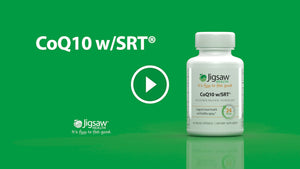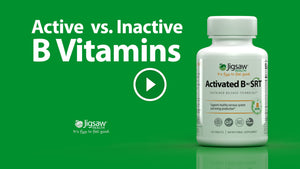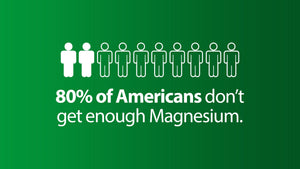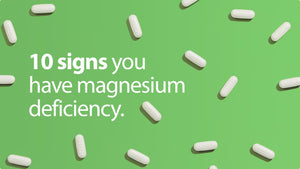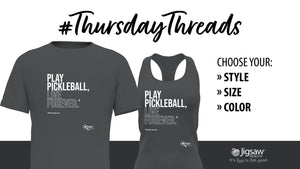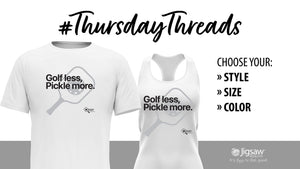Because we live in a modern industrialized society, heavy metals are found in everyday existence and they are difficult to avoid entirely. Heavy metal exposure occurs on a daily basis through food, soil, water and air. While most people can excrete toxic heavy metals successfully, other people cannot excrete them as efficiently. Race, ethnicity, and genetic predisposition may all play a role in successful heavy metal excretion in individuals. Chronic conditions can also play a role, since heavy metals are processed through the kidneys and eliminated through waste. Those who suffer from kidney dysfunction or digestive dysfunction are more susceptible to heavy metal toxicity.1
The most commonly encountered toxic heavy metals are aluminum, arsenic, cadmium, lead, mercury, and iron. Lead has been used industrially for the longest period of time, and therefore has generated the most information to date. Due to its toxic effects, lead has been banned for use in gasoline (which is the main reason why we now have unleaded gasoline). Other heavy metals, such as mercury and arsenic, are medically more controversial in terms of their potential damage to the human body.
When numerous metals are present in the body, these may have a synergistic toxicity. Dr. Boyd Haley, professor and chair of the chemistry department at the University of Kentucky, performed a study on rats and found that the mortality rate of rats exposed to a small dose of mercury or aluminum killed only 1 rat in 100. However, when the rats were exposed to both mercury and aluminum at the same time, all 100 rats died -- a 100% mortality rate.2
While avoiding heavy metals is almost impossible in our modern society, there are many ways that you can limit your exposure and reduce the possibility of developing heavy metal toxicity -- something which can have temporary or even permanent negative health consequences.
Aluminum Precautions
Aluminum is one of the most abundant elements on earth and it is found pervasively in drinking water and food. Aluminum crosses the blood barrier and it has been suspected in playing a role in Alzheimers disease (although the scientific results to date have been unable to confirm a direct causative relationship between Alzheimers and aluminum toxicity). Although its not possible to eliminate aluminum entirely because it so naturally abundant, you can limit your exposure by avoiding common products, drugs, and foods that contain aluminum.
Cookware. Cook with aluminum-free pots and pans. Choose stainless steel or enamel cookware. Avoid cooking acidic foods such as tomatoes and okra in aluminum pots and pans. Acidic foods help release aluminum into foods. Dont use aluminum foil for cooking or to store foods, especially acidic foods such as citrus (lemons, oranges, grapefruit), and tomatoes.
Foods. Avoid using baking powder that contains aluminum. Since many processed baked goods contain aluminum, look at food labels and make sure that the ingredients list does not contain aluminum. Avoid processed cheese. One slice of individually wrapped processed cheese can contain up to 50 mg of aluminum. Avoid pickles, since they are soaked in an alum solution that helps firm the cucumbers during the pickling process. People who ingest large amounts of aluminum compounds through food absorb a significant amount of aluminum. Foods that contain sodium aluminum phosphate, aluminum ammonium sulfate, or aluminum potassium sulfate
Beverages. Drink purified water. Water supplies may contain naturally occurring aluminum compounds, such as aluminum flouride. Avoid drinking beverages from aluminum soda cans.
Medications. Watch for over-the-counter drugs and hygiene products that contain aluminum, such as antacids, anti-diarrheal products, talcum powders, toothpaste, shampoos, cosmetics, antiseptic aluminum solutions, buffered aspirin, douches, and deodorants/antiperspirants. Check product labels before purchasing. People who routinely use over-the-counter products to relieve the symptoms of chronic conditions, such as buffered aspirin for arthritis and antacids for gastrointestinal problems, run the risk of aluminum toxicity by ingesting as much as 800 mg or more of aluminum in a single day. Below is a list of aluminum compounds youll find in the ingredients list of common products:
- Antacids containing aluminum magnesium hydroxide such as Di-gel®, Gavason®, Gelusil®, Maalox®, Mylanta®, and Tempo Soft®.
- Antidiarrheal products with aluminum magnesium silicate such as Donnagel®, Kaopectate®, Pepto-Bismol®, and Rheaban®.
- Buffered aspirin with aluminum hydroxide or aluminum gylcinate such as Bufferin®, Cope®, Vanquish®, and Arthritis Pain Formula®.
- Deodorants, antiperspirants, and powders with aluminum chlorhydrate.
- Douches containing aluminum salts such as Massengil®.
- Shampoos containing magnesium aluminum silicate or aluminum lauryl sulfate.
- Cosmetics with various aluminum compounds.
Pregnancy and Children. If you are pregnant, do not consume high-dose aluminum antacids, or other over-the-counter products that contain aluminum. Aluminum can be passed from mother to fetus and can cause aluminum toxicity in the unborn child.3 Aluminum also passes through to breast milk, so aluminum ingestion by the mother should be avoided as much as possible when breastfeeding.
If you have small children, make sure that all drugs containing aluminum have child-proof caps, or that they are stored out of reach of small children.4
Chronic conditions. Kidney dysfunction can increase the possibility of aluminum toxicity, since aluminum is primarily excreted through urine. Reduced urine output caused by kidney dysfunction can increase aluminum toxicity.
Other tips. Try melatonin. A study in Spain revealed that melatonin supports neurological health.5
High-doses of ascorbic acid (vitamin C) can be used as a chelating agent to aid in removing aluminum.
Replace table salt with a non-aluminum alternative such as Himalayan crystal salt. Common table salt may contain aluminum.6
Arsenic Precautions
Maintain a high-fiber diet by adding flax seed to your diet. Fiber binds with arsenic to eliminate it from the body.
Before 2002, pressure-treated wood in decks, patio furniture, playgrounds, benches, and picnic tables were treated with chromated copper arsenate (CCA). Protect your children from CCA-treated woods by having them wash their hands after playing in playgrounds and limiting their exposure to pressure-treated woods. Around your home, replace CCA-treated woods if you can, or apply a sealant every six months to treated woods to ensure that arsenic doesnt escape into your surrounding environment (within your home and in your garden).
Plant ferns in your garden. Ferns can remove arsenic from contaminated soils.7
Eat foods high in sulfur such as eggs, onions, beans, legumes, and garlic. Sulfur helps rid the body of arsenic.8
Cadmium Precautions
Keep nickel-cadmium batteries properly stored and out of reach of young children. Dispose of nickel-cadmium batteries properly by taking them to your local hazardous waste processing facility, instead of throwing them in the regular garbage. Cadmium can contaminate drinking water supplies.
Stop smoking. Smoking and second-hand smoke are the leading primary sources of cadmium exposure.
Keep a healthy diet. A diet deficient in calcium, protein, or ironOR high in fatincreases cadmium absorption.9 Exposure to low levels of cadmium can increase the risk of osteoporosis.10 Adequate calcium intake may offer protection against cadmium absorption.
Lead Precautions
Children are susceptible to lead poisoning, particularly if they live in homes or go to daycares built before 1978 that have lead-based paints. Ask your daycare facility about what precautions they take to ensure a lead-free environment. Test your older home professionally for lead. If your home tests positive, look for reputable companies that will safely remove lead from your home. Dont attempt to remove lead on your own, since lead dust caused by renovation can be more harmful than the lead on the walls.
Drink purified water. Water supplies may contain lead (as well as other heavy metals), so you may want to consider professional water testing to find out heavy metal levels in your water supply.
Lead absorption can be reduced by eating foods that contain iron, calcium, and zinc. Eat foods rich in iron such as eggs, dark green leafy vegetables, beans, peas, and other legumes. Dairy products such as milk, cheese, and yogurt are recommended for their high calcium content. Lean red meat and oysters are examples of foods that contain zinc.11
Wash childrens toys frequently, and make sure kids wash their hands routinely. This will help reduce lead exposure from lead dust. Washing with soap and water reduces lead dust.
Dont store alcohol in crystal containers. Alcohol can be contaminated when stored in lead-based crystal containers.
Wash your hands after contact with soil. Lead can be found in soil, so washing your hands routinely will reduce your exposure.
Stay away from Latin American folk remedies called arzacon and greta, which are used for upset stomach or indigestion, and pay-loo-ah, which is used for rash or fever. These are dangerous lead-based remedies.12
Use caution in certain hobbies that require contact with lead, such as stained glass window work or pottery. Pottery glazes may contain lead, as well as the materials used in stained glass production.
Do not drink or eat from ceramic ware that contains lead-based paints and glazes. Purchase only lead-free dishware.
Mercury Precautions
Amalgam fillings are the number one source of mercury exposure. Avoid amalgam (silver) fillings for dental caries and request non-mercury alternatives for fillings from a dentist that practices mercury-free dentistry. Find a biologic or holistic dentist that practices mercury-free dentistry.
If you have existing amalgam fillings, consult a mercury-free dentist for safe removal. Improper removal can be more dangerous than leaving your fillings in place.
Consult with your healthcare professional about vaccines that contain thimerosal, a mercury preservative that is potentially associated with mercury toxicity. Read more in A User Friendly Vaccine Schedule.
Choose thermometers that do not contain mercury, to avoid toxic spills as a result of breakage.
Certain types and sizes of fish contain more mercury than others. Large, predatory deep-sea fish such as tuna, mackerel, and swordfish tend to contain the highest levels of mercury. Smaller, younger fish tend to contain less mercury. Additionally, seafood from contaminated areas near oil rigs can contain high levels of mercury, such as Gulf Coast shellfish. In addition, farm-raised fish are also a lot fattier which helps to absorb dangerous contaminants and PCBs. Opt for wild-caught and minimal-mercury fish whenever possible.
Choose healthier alternatives such as wild-caught salmon or minimal-mercury tuna to benefit from the healthy omega-3 fatty acids found in fish. Because high levels of mercury have been found in seafood, the FDA advises pregnant women to reduce their fish intake as follows:
Do not eat shark, swordfish, king mackerel, or tilefish because they contain high levels of mercury.
Eat up to 12 ounces (2 average meals) a week of a variety of fish and shellfish that are lower in mercury.
Five of the most commonly eaten fish that are low in mercury are shrimp, canned light tuna, salmon, pollock, and catfish.
Another commonly eaten fish, albacore ("white") tuna has more mercury than canned light tuna. So, when choosing your two meals of fish and shellfish, you may eat up to 6 ounces (one average meal) of albacore tuna per week.
- Check local advisories about the safety of fish caught by family and friends in your local lakes, rivers, and coastal areas. If no advice is available, eat up to 6 ounces (one average meal) per week of fish you catch from local waters, but don't consume any other fish during that week.13
Iron Precautions
While your body needs iron (especially women of childbearing age), too much of a good thing can be harmful to your health. Taking supplements with high-dose iron or taking multiple supplements with varying amounts of iron can lead to dangerous iron accumulation. Unless your healthcare professional prescribes iron, you should avoid taking supplements with iron. Iron is found in abundance in many foods. Red meat, when eaten together with vegetables, can boost iron absorption by up to 400%.
Iron overdose is the leading cause of death due to a toxicological agent in children under 6 years of age. Keep vitamin supplements containing iron (such as childrens vitamins, multivitamins, and prenatal vitamins) out of the reach of small children. In particular, childrens vitamins with iron may have the appearance of candy, enticing children to accidentally overdose on iron.14
Cited Sources:
1) Centers for Disease Control, National Center for Environmental Health http://www.cdc.gov/nceh/radiation/Savannah/SRSHES...
Accessed Oct. 2006
2) Results from the Boyd Haley Laboratory relating to toxic effects of mercury to exacerbation of the medical condition classified as Alzheimers Disease
http://www.holistic-dentistry.com/artalzeimer.asp
Accessed Oct. 2006
3) Aluminum Toxicity
http://www.hbci.com/~wenonah/hydro/al.htm
Accessed Oct. 2006
4) ATSDR ToxFacts for Aluminum
http://www.atsdr.cdc.gov/tfacts22.html
Accessed Oct. 2006
5) Aluminum-induced pro-oxidant effects in rats: protective role of exogenous melatonin.
National Institutes of Health
http://www.ncbi.nlm.nih.gov/entrez/query.fcgi?cmd=...
Accessed Oct. 2006
6) Analytical Research Labs, Inc., Aluminum Toxicity
http://www.arltma.com/AlumToxDoc.htm
Accessed Oct. 2006
7) Childrens Health Environmental Initiative, How to Avoid Arsenic from CCA-treated Wood
http://www.checnet.org/HealtheHouse/education/top1...
Accessed Oct. 2006
8) Arsenic Poisoning Treatment and Symptoms, Essortment
http://sdsd.essortment.com/arsenicpoisonin_rljn.ht...
Accessed Oct. 2006
9) ToxFAQs for Cadmium, Agency for Toxic Substances and Disease Registry
http://www.atsdr.cdc.gov/tfacts5.html
Accessed Oct. 2006
10) Low-level Cadmium Exposure and Osteoporosis. PubMed
http://www.ncbi.nlm.nih.gov/entrez/query.fcgi?cmd=...
Accessed Oct. 2006
11) Lead Poisoning," National Safety Council
http://www.nsc.org/library/facts/lead.htm
Accessed Oct. 2006
12) General Lead Information, CDC
http://www.cdc.gov/nceh/lead/faq/about.htm
Accessed Oct. 2006
13) What You Need to Know About Mercury in Fish and Shellfish. Food and Drug Administration
http://www.cfsan.fda.gov/~dms/admehg3.html
Accessed Oct. 2006
14) Iron Toxicity, eMedicine
http://www.emedicine.com/EMERG/topic285.htm
Accessed Oct. 2006








